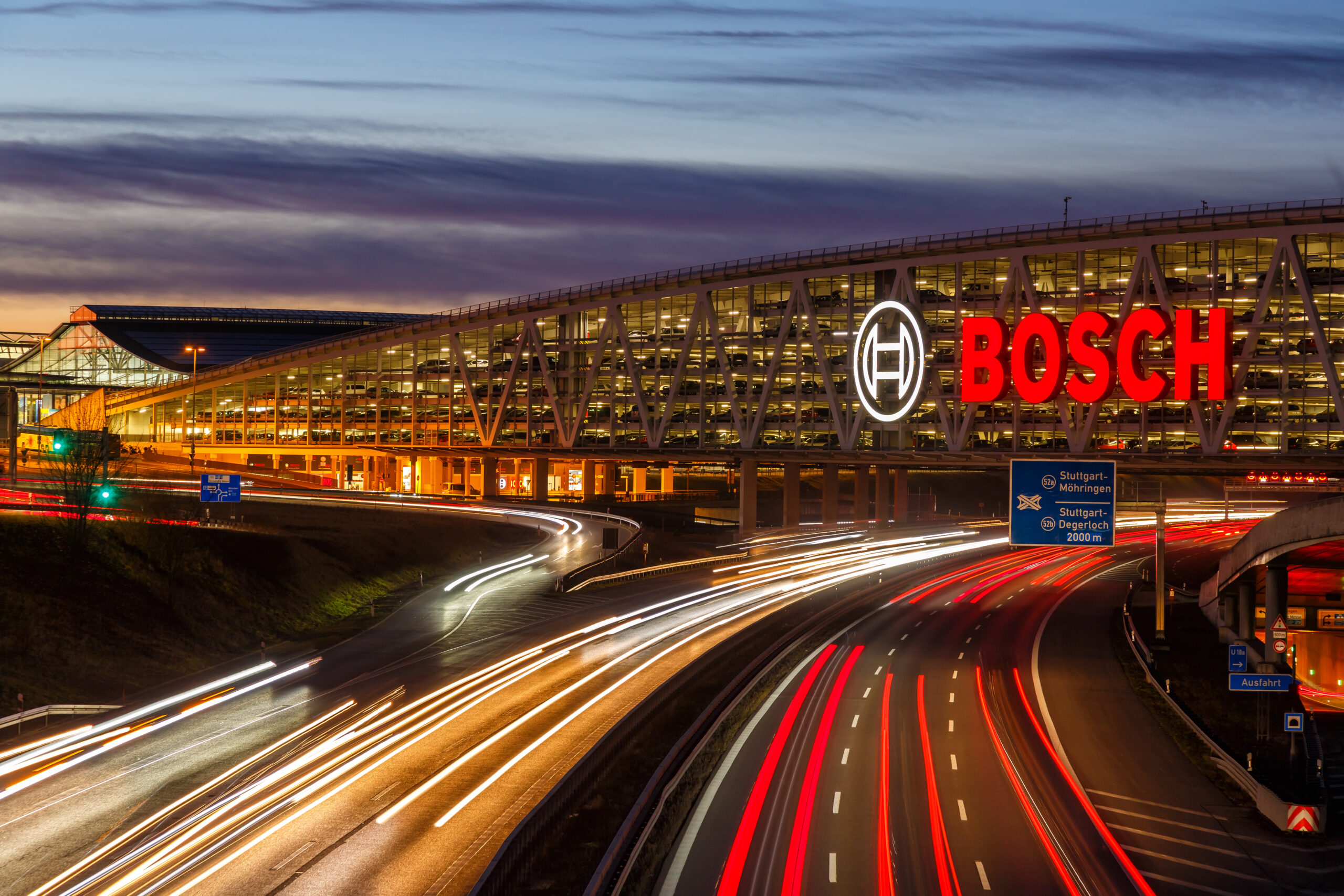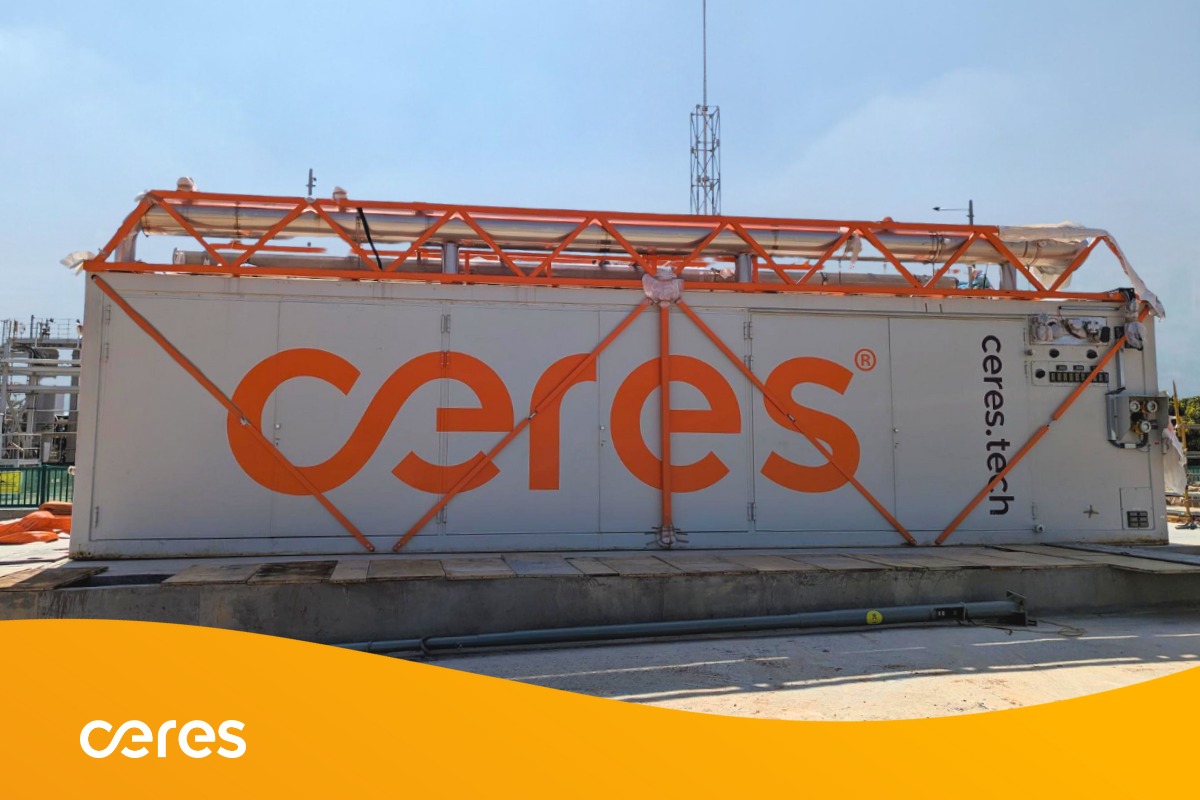“Scaling up Remains a Complex Challenge,” Says Bosch as it Introduces New PEM Stack

After Bosch released its Hybrion PEM electrolysis stacks, Hydrogen Industry Leaders sits down with Matthias Ziebell, Senior Vice President Sales, Energy Markets & Business Development, to discuss the details of the stack, and what it means for the wider hydrogen economy.
How does the Hybrion Stack work and how was it developed?
Bosch manufactures the key component of PEM water electrolysis technology – the Hybrion proton exchange membrane (PEM) electrolysis stack.
As the heart of every electrolysis system, it is where hydrogen is produced within the cells. The process begins by supplying ultrapure liquid water to the anode side of the electrolyser. When voltage is applied across the two electrodes, protons are released and migrate through the membrane.
This electrochemical reaction splits water into hydrogen and oxygen, with hydrogen forming at the cathode and oxygen at the anode. This method offers several advantages, including high power density and exceptional flexibility.
The development of this technology is based on a wide range of experience Bosch was gaining in the PEM fuel cell business for truck applications.
Can you tell us about the special polymer that makes the Hybrion Stack different?
In the electrolysis process, ultrapure water flows around a proton exchange membrane (PEM). Located between the anode and the cathode, this membrane is ionically conductive.
When an electric voltage is applied to both electrodes, the water on the anode side oxidizes to oxygen, free electrons, and hydrogen ions.
The ions pass through the membrane by diffusion. They then combine with the electrons at the cathode to form hydrogen atoms.
PEM water electrolysis uses a solid polymer electrolyte – the polymer electrolyte membrane, which is also called the proton exchange membrane.
The membrane consists of an electrically insulating but proton-conducting polymer that has been coated on both sides with catalysts.
A particular advantage of the membrane in the Hybrion stack is a special foil – a kind of edge reinforcement, which increases robustness and sealing performance, thereby positively impacting the durability of the stack.
What scale can these stacks work on?
Possible use cases range from decentralised electrolysers to centralised, large-scale industrial solutions with outputs of several hundred megawatts.
In scalable, decentralised plants with up to 5 MW per container, the Hybrion PEM electrolysis stacks by Bosch are ideal for integrating into electrolysis solutions that are positioned in the exact location where the hydrogen is used.
Embedded in large industrial plants, the Hybrion stacks are suitable for use in centralised, high-volume production of hydrogen with a capacity of several hundred megawatts.
Branches of industry such as the refinery, steel, chemical, fertiliser, glass, or ceramics sectors already use large quantities of hydrogen.
These sectors are now switching their hydrogen production over to large PEM electrolysis systems as part of the transformation to decarbonised energy sources – also supporting regional resilience programs.
What are the core benefits of decentralisation with your stack?
Integrated into decentralised container solutions, the Hybrion stack produces hydrogen exactly where it’s needed.
This setup cuts transport costs, boosts self-sufficiency, and is ideal for production facilities looking to meet their own hydrogen demand – whether as a process gas or an energy source.
In addition the Hybrion stack will be placed in large scale applications for the mass production of hydrogen produced from renewable energies.
How important is scalability, and how does Bosch see the development of the scalability of hydrogen technology in the wider economy?
At Bosch, we firmly believe that a climate-neutral future is only possible with clean hydrogen. Scalability is the key to unlocking its full potential.
While many hydrogen projects are still in pilot phases, the momentum is growing, from the ramp-up of electrolyser production to increasingly supportive policy frameworks.
Scaling up remains a complex challenge. It demands cross-sector collaboration, major investment, and robust supply chains. But scalability is part of Bosch’s DNA, building and expanding manufacturing infrastructure is what we do best.
Our deep expertise in the automotive sector provides a solid foundation. The more we focus today on scalable, modular, and standardised solutions, the sooner clean hydrogen can become a cornerstone of the global economy.

